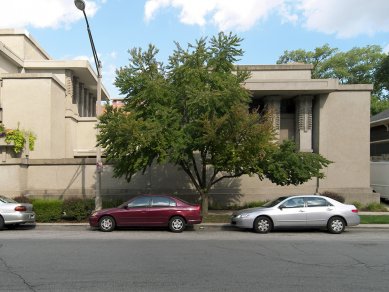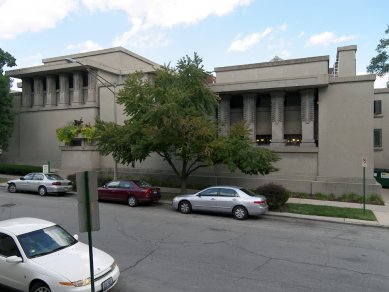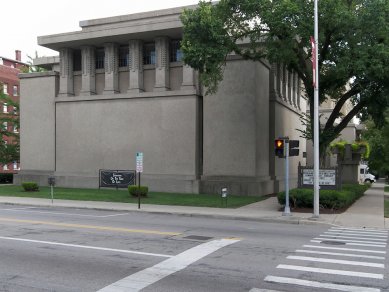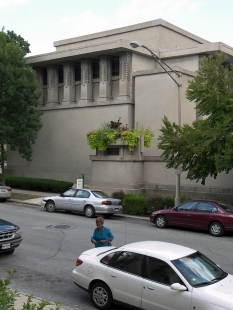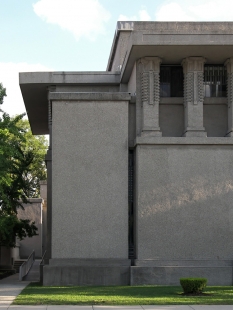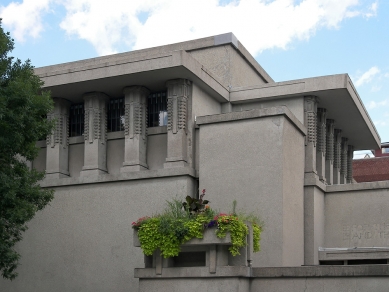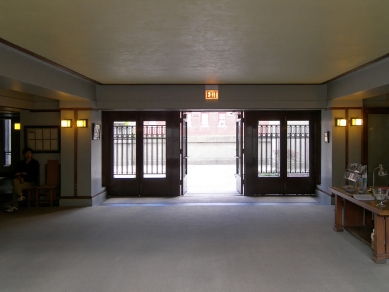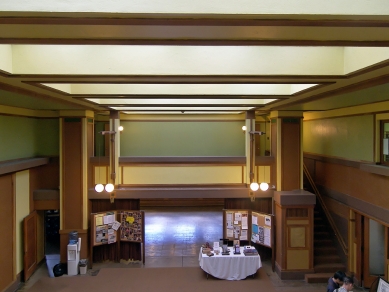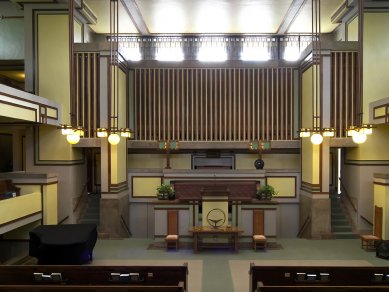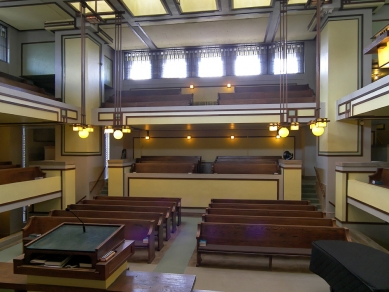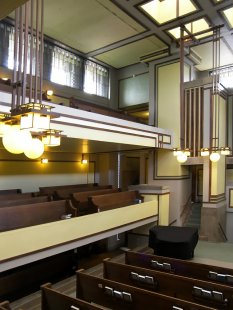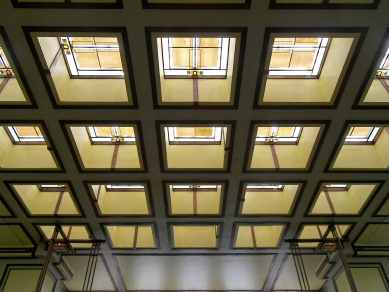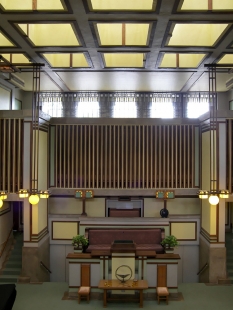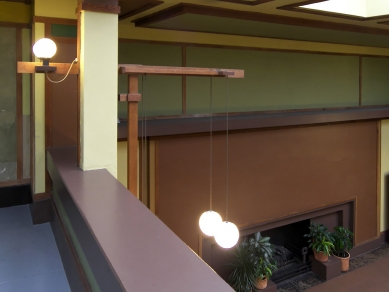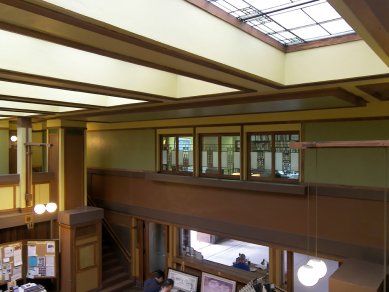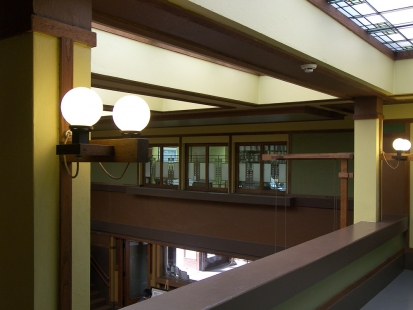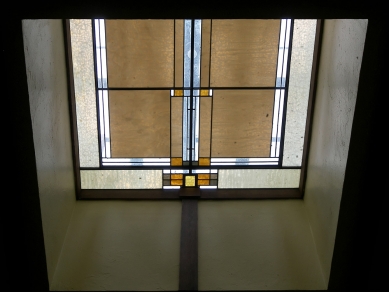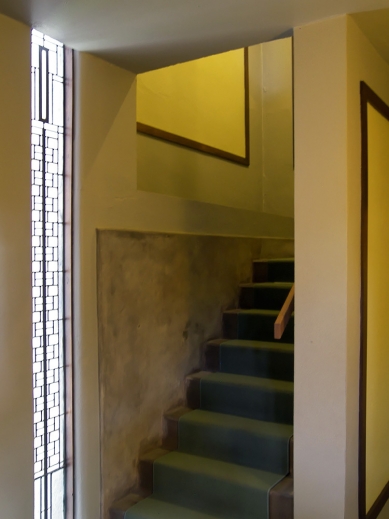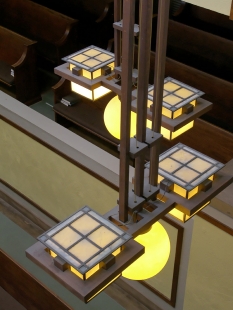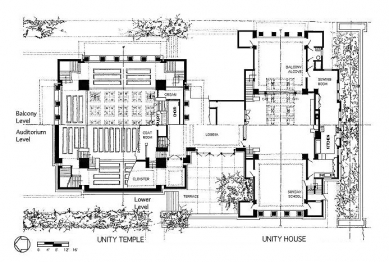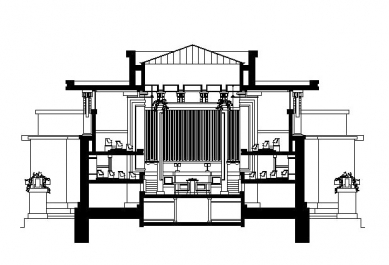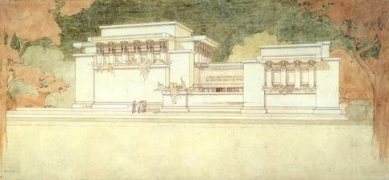
Unity Temple

“Every radical departure from the customary must make its appeal to reason to determine its worth and truth. Without good reason we should not depart from the customary. Especially is this true in regard to things sacred. But if the change is governed by sound reason, it compels an adjustment of thought.”
Wright’s intent behind his design for the Unity Temple was to create two separate spaces for two different functions common in the modern church: a place for worship and a place for the service of man. The building is thereby broken into two distinct spaces, allowing form to follow function. The separation of these two functions establishes a hierarchy by allowing for the creation of a specific atmosphere in the place of worship. The plan consists of two buildings united by an entrance lobby where Wright’s intentions are engraved along the exterior stating, “For the worship of God and the service of man.” This entrance, however, is hidden from its surroundings allowing for visitors to experience a small journey and ascend off of the street level to enter the sacred building.
The geometry was developed with cubes, a revolutionary design decision in the world of religious architecture. There is no steeple reaching up towards the heavens or a clearly marked entrance that welcomes visitors. Instead, Wright’s focus was within the spaces themselves and how their functions were expressed.
The worship space, for instance, is a grand four-story space with seating on different levels and three sides of the room so that no person is further than 40 feet from the pulpit. Since the building is on a corner site, Wright enclosed the structure without street level windows so as to prevent any noise from interrupting worship. The building receives natural light through clerestories along the upper walls and a series of square stained glass skylights that puncture through the ceiling.
The Unity Temple was among the first monumental buildings to be entirely comprised of reinforced concrete that was poured on site. The concrete gave the temple a solid, bold finish that established its monumentality. It was also used to mold the organic details that ornament the exterior of the Prairie-style building. Unfortunately, Wright’s experimental use of concrete has gone through extensive damage due to cracking and an internal drainage system designed by Wright in order to avoid gutters on the building’s sixteen separate roofs. Water overflows and permeates through the concrete structure because the drainage system was undersized. Today the Unity Temple Restoration Foundation is continually working on restoring and maintaining the modern masterpiece, which has been a United States National Historic Landmark since 1971.
Wright’s intent behind his design for the Unity Temple was to create two separate spaces for two different functions common in the modern church: a place for worship and a place for the service of man. The building is thereby broken into two distinct spaces, allowing form to follow function. The separation of these two functions establishes a hierarchy by allowing for the creation of a specific atmosphere in the place of worship. The plan consists of two buildings united by an entrance lobby where Wright’s intentions are engraved along the exterior stating, “For the worship of God and the service of man.” This entrance, however, is hidden from its surroundings allowing for visitors to experience a small journey and ascend off of the street level to enter the sacred building.
The geometry was developed with cubes, a revolutionary design decision in the world of religious architecture. There is no steeple reaching up towards the heavens or a clearly marked entrance that welcomes visitors. Instead, Wright’s focus was within the spaces themselves and how their functions were expressed.
The worship space, for instance, is a grand four-story space with seating on different levels and three sides of the room so that no person is further than 40 feet from the pulpit. Since the building is on a corner site, Wright enclosed the structure without street level windows so as to prevent any noise from interrupting worship. The building receives natural light through clerestories along the upper walls and a series of square stained glass skylights that puncture through the ceiling.
The Unity Temple was among the first monumental buildings to be entirely comprised of reinforced concrete that was poured on site. The concrete gave the temple a solid, bold finish that established its monumentality. It was also used to mold the organic details that ornament the exterior of the Prairie-style building. Unfortunately, Wright’s experimental use of concrete has gone through extensive damage due to cracking and an internal drainage system designed by Wright in order to avoid gutters on the building’s sixteen separate roofs. Water overflows and permeates through the concrete structure because the drainage system was undersized. Today the Unity Temple Restoration Foundation is continually working on restoring and maintaining the modern masterpiece, which has been a United States National Historic Landmark since 1971.
0 comments
add comment



